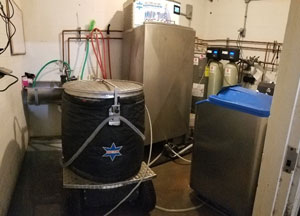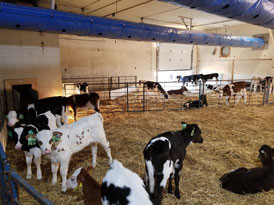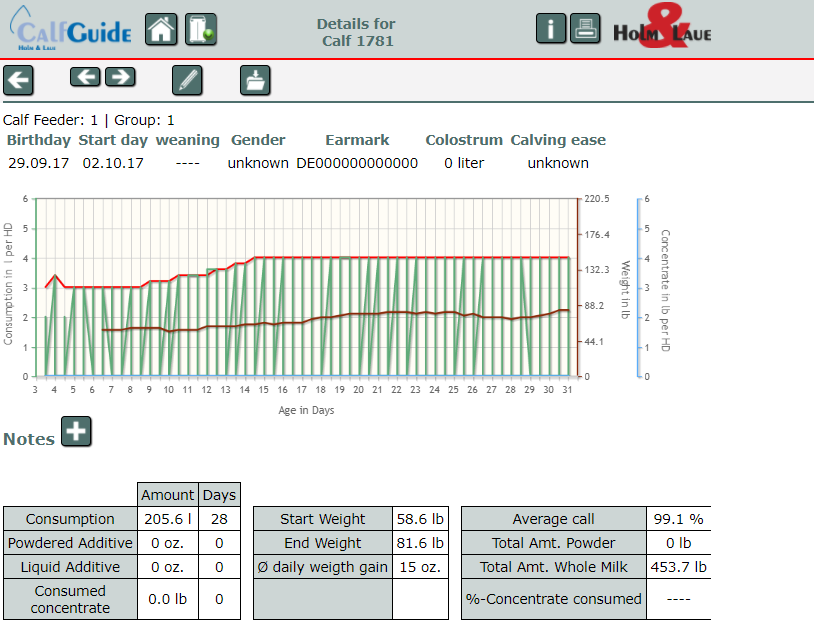Maintaining the health and growth of dairy calves is very important in their first few months of life. The calf program at the University of Minnesota West Central Research and Outreach Center (WCROC) has focused around group feeding of dairy calves. We have conducted calf studies on the economics of once per day feeding, optimal weaning time, as well as nutritional supplements for growing calves on milk. Recently, we have installed an automated calf feeder at our research center to help answer questions that producers have about using these systems and how to effectively raise calves on automated feeders.
I wanted to share our experience with retrofitting a barn to add an automated calf feeder into our operation. It was a daunting task, but we have made everything work and our calves are doing great. The U of MN WCROC milks 275 cows and raises about 75 heifer calves per calving season (spring and fall). So far, we will only be able to raise about one-half of our calves on the automated feeder. The remaining calves are housed in groups of 10 in outdoor superhutches and fed 6 liters of milk once per day. When we started thinking about putting in an automated feeder, of course were not thinking about the water softener, water heaters, calf pen waterers, etc. that had to be installed as well.

At our dairy we have fed whole milk for many years, so we needed a system that could work with our whole milk feeding. We installed a Holm and Laue HL 100 automated calf feeder, with 2 calf Hygiene Stations for feeding. One of the Hygiene Stations has a forefoot calf weigh scale attached to record daily growth of calves. For feeding whole milk, we added a 200-gallon Milk Jug cooling tank from Calf-Star in New Franken, WI. We also have a Holm and Laue Milk Taxi that can pasteurize milk and transport the milk to the Milk Jug and calf feeder. Quite possibly, the biggest reason that I went with this brand of automated feeder was because of the cleanliness features. After a calf visits the feeder, the mixing bowl in rinsed with clean water, and the nipple is rinsed with a mixture of water and hydrogen peroxide. We also have our systems to start a wash cycle automatically 3 times per day. We also change the nipple in the hygiene station once per day for washing. We also have the Holm and Laue CalfGuide system that provides an interface to allow the monitoring of calf milk consumption, drinking rates, number of visits, and body weights.

We installed our automated feed in a 60 ft by 60 ft barn that we retrofitted to fit the feeder. We have an unconventional system, because I wanted our calves to have access to the outdoors even in the winter time. We will save that discussion for another day why I think calves should be outside. We have 2 pens in our barn with 15 calves each that will provide for 49 square feet per calf. We also bed with a lot of dry straw to allow calves to burrow into the straw and keep warm in the winter. We may be able to put more calves on each nipple feeding station, but we decide to limit ourselves the first time we had calves on the feeder. We had already been feeding calves in groups of 10, so it was easy for us to increase the group size number. For ventilation, we installed the FLIP DUCT calf barn ventilation design from Crystal Creek in Spooner, WI. The design allows the us to use the ventilation system during the summer and winter weather. The system will allow 46 cfm per calf the winter and 109 cfm per calf during the summer, which will allow air volume in the group pens to change at 45 times per hour in the summer.
Our calves are being fed 8 L per day in 2 L increments of whole milk. We start them on the feeder at 5 days of age and allow them to drink 6.8 L per day. They are ramped up to 8 L within 7 days. We also will start gradually weaning the calves off milk starting at 49 days and will wean by 56 days. The system provides us valuable data:

After having calves on the automated calf feeder, everything is looking good. Calves are growing, are healthy, and look good and some calves are growing 2.5 lbs per day. We haven’t had any health problems or scours in our calves either. However, we do have excellent colostrum management, superb hygiene, excellent calf starter quality and consumption, and access to fresh, clean water at all times, which are all important to raising healthy calves. In the future, I’ll provide some more updates on feeding calves with our automated feeder.
